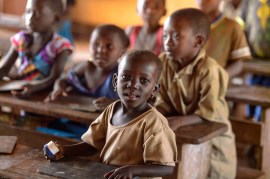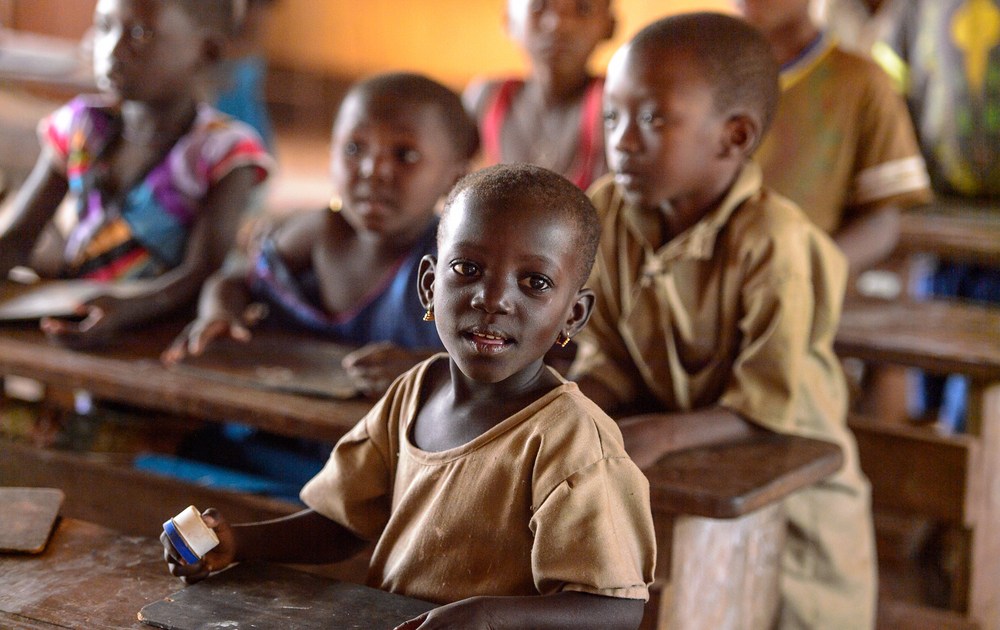
Sierra Leone President Maada Bio has made education the cornerstone of his human capital development agenda. Led by Minister David Sengeh, the country’s Ministry of Education is at the forefront of implementing major reforms, including a policy of radical inclusion in schools.
The premise is simple: Every child, regardless of gender, pregnancy status, disability, or otherwise, must have guaranteed access to mainstream quality education. But to achieve real radical inclusion and close learning gaps in Sierra Leone, we should consider a bold but impactful reform that would ensure children are taught in their mother language for the first three to five years of schooling.
A recent early grade reading and math assessment (EGRA-EGMA), conducted by the Ministry of Education and various credible partners, produced some eye-popping findings: 97 percent of students in second grade cannot read and up to 60 percent of students in fourth grade still score zero on the study’s comprehension test. Outcomes were just as bad in math, with 90 percent of class 2 students and 70 percent of fourth grade students incapable of doing basic subtraction. These are clearly alarming numbers that require a holistic set of solutions, some of which are currently being crafted or implemented by the government.
The report makes another important observation: Even though English is the sole official language of instruction, only 1 percent of learners speak it in the home; 75 percent speak their local language, and up to 50 percent speak Krio. Moreover, despite official policy, up to 30 percent of learners reported using local languages in school as part of class instruction.
English has been glamorized as the sole medium of instruction for years, with many believing that speaking local languages undermines the learning process. In fact, at many elite schools, there is a punishment for “speaking Patwa.”
Parents could support their children with basic understanding, counting, and other skills if they were not so limited by the language of instruction—in this case, English.
There is, however, quite overwhelming evidence that the policy of prioritizing English proficiency undermines learning and has negative effects on learners, parents, and the education system in general. For this reason, many countries—including Haiti, Kenya, and Gambia—have switched to using the pupils’ primary language as the language of instruction in grades one through five, as recommended by UNESCO as far back as 1953. UNESCO’s advice, which was grounded in solid research back then, has been confirmed by subsequent studies on the subject.
A study conducted by in Kenya in 2005, for example, found that children are more likely to enroll and stay in school when taught in their primary language. For countries that have tried this on a small scale, this has consistently held true, with very positive results. Are we doing a disservice to the 99 percent of learners in Sierra Leone for whom English is not a first or primary language by teaching them in English?
Speaking a secondary language in early grade classrooms can actually decrease access, equity, and inclusion, according to the World Bank and UNESCO. Learning is difficult when children walk into a classroom for the first time and hear a language they have probably never encountered, do not speak at home, and have almost no opportunity to practice outside of that context. In many instances, English is a language in which the teacher herself is not very conversant; this is the reality for many teachers in rural and peri-urban areas, making it difficult for them to explain the most rudimentary concepts to a child.
So, not only do pupils struggle to understand this new language thrust upon them, but also the teacher and pupils face barriers to establishing a meaningful learning process. The victims in this are the learners who, as the EGRA results show, are seriously lagging behind.
Every time this issue has been raised, the question immediately emerges about our ability to interact and compete with the outside world without the advantage—they presume—that English bestows. A policy of radical inclusion through primary language instruction is not an argument against learning English. In fact, quite the opposite. Multiple studies have shown that children who are taught in their first language in the early years are more successful at transferring these skills to a second language later.
This was the case for the 125 classrooms under the Early Learning Language program implemented in 125 schools in Gambia. Results from 2014 showed that children who participated not only performed better in national languages but also acquired the kinds of foundational skills that made it easier for them to learn English as well.
Another reason to consider this evidence-based shift is the inclusion and participation of parents in the education of their children, especially at the early stages. Parents find it difficult to get involved with their children’s education when they are taught in a language that most do not understand. Parents could support their children with basic understanding, counting, and other skills if they were not so limited by the language of instruction—in this case, English. The EGRA-EGMA study in Sierra Leone shows that only 9 percent of mothers and 13 percent of fathers read with their children at home. We need to significantly up those numbers to see the kinds of changes we are seeking in education outcomes.
Arguably even more important are the benefits this shift would hold for girls and other marginalized groups. A 2005 UNESCO report found that “the learner’s mother tongue holds the key to making schooling more inclusive,” citing research showing that “girls who learn in familiar languages stay in school longer, are more likely to be identified as good students, do better on achievement tests, and repeat grades less often than their peers who do not get home language instruction.”
So how do we make this bold shift?
First, we admit that we have a problem and that the shift is necessary.
Second, we embrace and support communities where this shift has long been embedded, such as in rural schools that teach their children in the dominant local language. We should learn from these communities and begin to develop resources that allow for primary language instruction across the country.
Finally, include local language instruction in teacher training institutions.
Radical as the shift may seem, we can start a gradual, controlled rollout of this scheme—as has been done successfully in other countries, with a few major languages throughout our education system. Whatever the case, it is time for us not just to have this debate but also to start the process that will enable children to learn better and faster and truly compete in the world.
That is what radical inclusion looks like.


